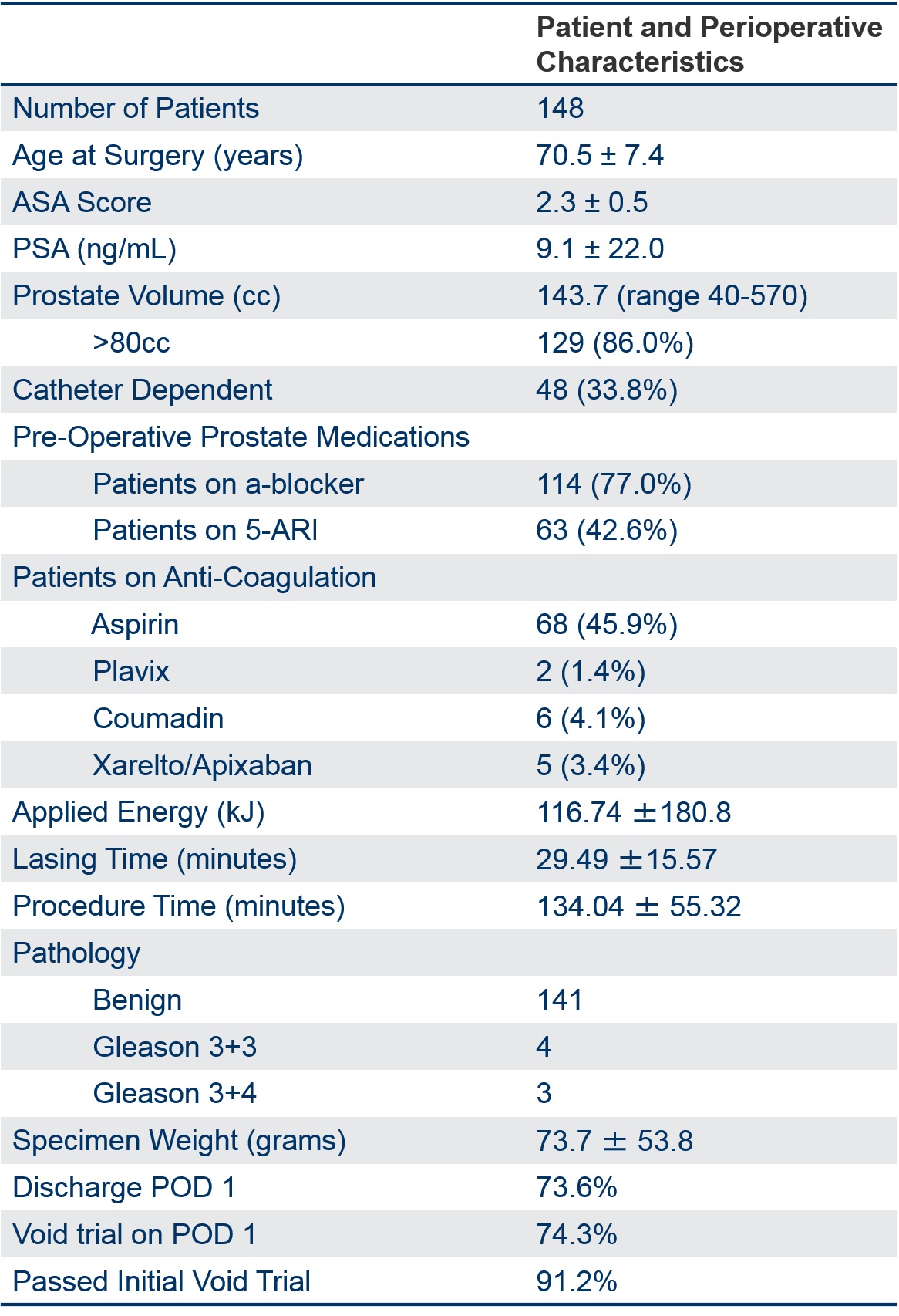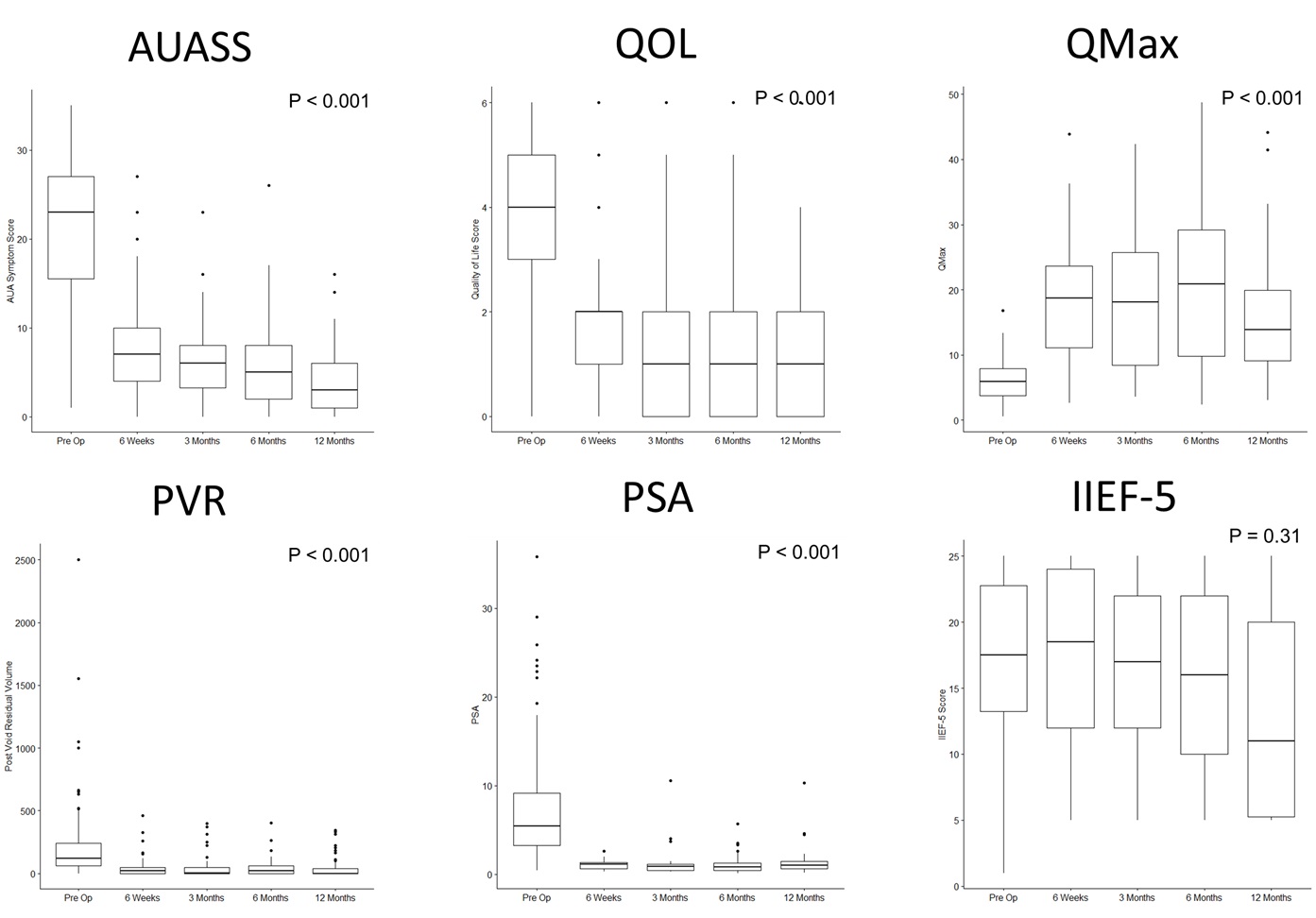Green Light Laser Enucleation of the Prostate (GLEP) with Lasting Outcomes: Longer-Term Follow-up
Tammer Yamany, MD, Carlos Mejia, BS, Kai Li, MD, Alan Yaghoubian, MD, Mahdi Zangi, MD, Bo Wu, MD, Shahin Tabatabaei, MD
Massachusetts General Hospital, Boston, MA
BACKGROUND: The short-term safety and efficacy of the Green Light Laser Enucleation of the Prostate (GLEP) has been reported previously. Theoretical advantages of GLEP include improved hemostasis due to the absorption spectrum of 532nm laser, better tissue handling due to the side-firing laser fiber, better visualization of the prostate capsule, and more versatility with concomitant vaporization. We study the longer term (greater than 12 month) safety and efficacy of en-bloc GLEP with prostate morcellation using a side-firing laser for definitive management of symptomatic LUTS in patients with enlarged prostates.
METHODS: We performed a retrospective analysis of the first 148 patients to undergo GLEP at our institution from 9/2014 to 8/2017. Primary outcomes were AUA symptom score, maximum flow rate, and post-void residual volume. Secondary outcomes were quality of life score, IIEF-5 score, and PSA. The technique for GLEP has previously been described.
RESULTS: Patient and peri-operative characteristics can be found in Table 1. No intraoperative complications occurred. Median follow up time was 12 months. Primary and secondary outcomes can be found in Figure 1, with statistically significant improvement in all parameters (p<0.001) except IIEF-5, which demonstrated no change (p=0.31). The benefits of surgery are lasting with no significant change in primary or secondary outcomes from 6-8 week follow up to 12 month follow up. Complication rates included 1.4% blood transfusion, 6.1% clot retention, and 4.7% urinary tract infection. 10.8% of patients had stress urinary incontinence (SUI) at three months with 6.8% of patients having persistent SUI at 12 months. Among patients with SUI, the median number of pads per day used was 1 at 16 months. 2.7% of patients developed an anterior urethral stricture that could be passively dilated with flexible cystoscopy. No patients required additional prostate debulking procedure in the time frame studied.
CONCLUSIONS: In experienced hands, GLEP is a safe and feasible option for management of large prostates with lasting outcomes beyond one year. 

Back to 2019 Abstracts
